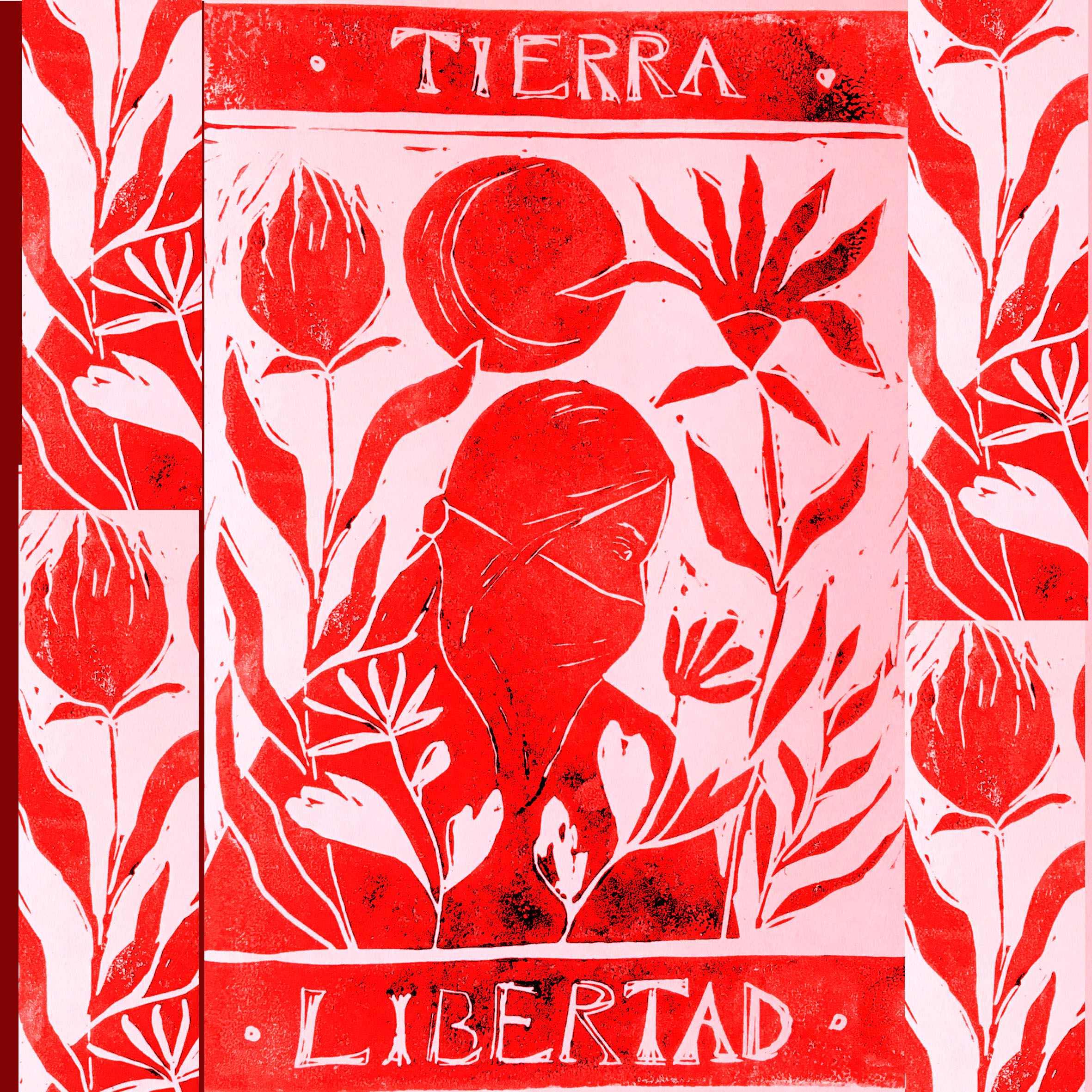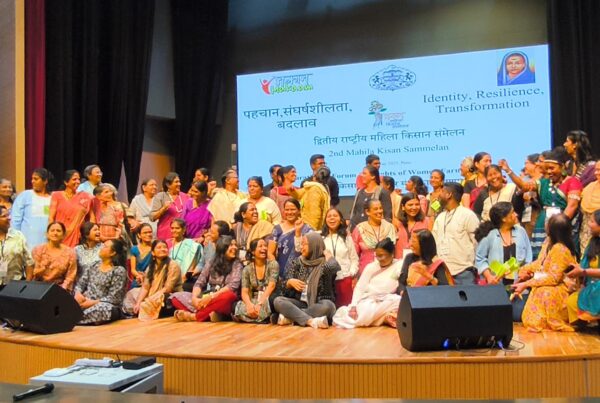By Arianna Tozzi
Cottonopolis, as Manchester was known in the 19th century was the heart of the extractive colonial cotton economy that fuelled Britain into the first industrial revolution. This photo essay tells the story of the socio-environmental legacy of the development of cotton capitalism in Vidarbha, a region in central India, and explores the agriculture alternatives emerging from the current agrarian crisis.
The escalating tensions in North America which culminated in the outbreak of the American Civil War in 1861 threatened the supply of raw cotton to British markets. To safeguard the interests of the Lancashire manufacturers, the Manchester merchants formed the Cotton Supply Association whose primary goal was to expand cotton production in suitable regions across the British Empire. India was identified as the country with the greatest potential to replace the American cotton monopoly in the event of sudden supply disruption.
Situated at the very heart of India, the region of Vidarbha (previously known as Berar), had the ideal conditions for growing cotton (Figure 1). Its fertile soil, commonly known as ‘black cotton soil’, yielded the best quality of cotton in the country and a large agrarian population ensured an abundant supply of inexpensive labour in the fields.

Figure 1: Map of the British Raj with Berar. Source: Smith, 1882
The introduction of private property rights on the land played a key role in the development of an extractive cotton economy. Cultivators (or khatedar) belonging to dominant castes were granted occupancy rights under the condition of utilising the land exclusively for agricultural purposes and meeting tax payments. As cotton was the only guaranteed marketable commodity, cultivators were compelled to grow cotton on increasingly larger tracts of land, substituting cereals and other food crops. Traditional occupations like ginners, spinners, wavers, and dyers that formed an important part of the pre-colonial economy slowly disappeared as unprocessed cotton was exported through a network of railways and newly constructed roads.
The magnitude of India’s transformation into the primary supplier of cotton to Great Britain during the American Civil War is staggering. From a relatively modest contribution of 12% before 1861, by the end of the first year of Civil War, India supplied 90% of the raw cotton imported into Britain, a quarter of which was from Berar. Under the directive of the Manchester Chamber of Commerce, Berar became one of the largest suppliers of raw cotton to England, with severe consequences for the local farm economy and ecology that reverberate today.
Seeds of resistance in the midst of an agrarian crisis
More than 75 years after Indian independence from Britain, Vidarbha has emerged as a symbol of an ongoing agrarian crisis in India, in which monoculture of genetically modified cotton plays a central role. This crisis is complex and driven by multiple factors. Fluctuating prices of cotton in the global market, the rising costs of cultivation and the reliance on synthetic fertilisers and pesticides to achieve high yield, make agriculture very risky for the majority of farmers. Compelled to borrow money at the start of each season, farmers often find themselves trapped in spiralling levels of debts which have been linked to a tragic rise in farmer suicides.
In this context of widespread uncertainties, farmers often keep their cotton stored in their homes for months waiting for the right moment to sell to the market (Figure 2). The risks of waiting are high and their hopes for better returns are often met with disappointment. As the next sowing season approaches, if market prices have not risen above their desired threshold, farmers find themselves rushing to sell their produce at the same time. As the price for cotton suddenly crashes, many cultivators have no option but to sell their produce at a loss.

Figure 2: Bt Cotton stored in the house of a farmer in Wardha, India. Credit: Arianna Tozzi
Bt Cotton: An engineered seed
The first Genetically Modified (GM) Bt cotton variety was introduced in India in 2002. Marketed as a ‘miracle technology’, it promised to simultaneously increase yields while reducing reliance on pesticides by providing seeds engineered to resist common pest attacks. However, Bt cotton is protected by intellectual property rights and cannot be re-sown, forcing farmers to purchase new seeds each year and significantly increasing cultivation costs.
Within a few years, Bt cotton replaced all non-GM varieties, and now occupies 95% of India’s cotton farmland. After an initial period of bumper harvests, yields have now started to decline, needing larger quantities of fertilisers to maintain production levels. The decrease in genetic diversity in the fields has also led to the resurgence of pests, driving up the use of harmful pesticides.

Figure 3: An unirrigated cotton field in Wardha, Maharashtra. Credit: Arianna Tozzi
The majority of smallholder farmers in Vidarbha grow cotton on unirrigated rainfed lands. Monsoon rain, which falls from June to September, is their main source of water for irrigation. The moisture stored in the soil helps the crop grow until January. However, as farmers are using increasing amounts of synthetic fertilisers and pesticides, soils are losing their capacity to retain water, making rainfed agriculture increasingly challenging.

Figure 4: Bt cotton loaded on a truck to be transported to ginning pressing in Yavatmal, Maharashtra. Credit: Arianna Tozzi
While corporate interests have attempted to address these issues by introducing updated Bt varieties, farming communities and local organisations are exploring new agricultural models to reclaim seed sovereignty and leverage their extensive knowledge of agricultural practices and crop diversity. The Gram Sewa Mandal is one of these organisations (Figure 5). Inspired by Gandhian ideas of self-reliance and self-sufficiency, the Mandal encourages farmers to grow indigenous cotton and diversify their cropping pattern by reintroducing cultivations of spices, millets and legumes. The Mandal gives farmers indigenous seeds and commits to purchasing their harvest for a premium. Each year in January, farmers bring their harvested cotton to the Mandal, which processes it into khadi – hand spun cotton produced from indigenous seeds.

Figure 5: Entrance of the Gram Sewa Mandal. Wardha, Maharashtra. Credit: Arianna Tozzi
Lancashire’s continued presence in Vidarbha’s landscape
Whilst the majority of cotton was shipped to England as raw material and imported back as a finished product, some local traders realised the economic potential of establishing spinning and weaving mills directly in India. From the late 1850’s, a handful of mills were established in Bombay (Mumbai) and Ahmedabad, which became known as “the Manchester of India”.
Although colonial policies discouraged the construction of mills in India, following the end of the American Civil War their numbers gradually increased as concerns over shortages in Lancashire subsided. These Indian mills used machines manufactured in the towns of Lancashire, which were designed to process the long-staple cotton fibres introduced under British rule. Once these mills were decommissioned, the machines lay unused until recently, when they have been put to a new use.
As genetically modified and hybrid varieties introduced longer cotton fibres, the Gram Sewa Mandal realised that the old British-made machines were the only equipment suitable for processing indigenous varieties. Embarking on a journey across India’s former cotton mills, the Mandal gave a life to these colonial-era machines, which are now employed throughout their production line.
Machines that were once a symbol of colonial rule are being used by grassroots cooperatives to construct a new agricultural paradigm against corporate monopoly power.

Figure 6: A blower machine manufactured in Todmorden. Gram Sewa Mandal, Wardha, Maharashtra. Credit: Adam Barr

Figure 7: A carding machine manufactured in Bolton, England. Gram Sewa Mandal, Wardha, Maharashtra. Credit: Adam Barr

Figure 8: A carding machine manufactured in Bolton, England. Gram Sewa Mandal, Maharashtra, India. Credit: Adam Barr
The names of Lancashire’s mill towns linger in the dry heat of central India.
Invisible Women and Cotton
Women form the invisible backbone of agriculture in India. As men increasingly migrate for seasonal employment, women are taking the responsibility of all farming operations. From preparing the land, sowing the seeds, weeding, harvesting, most of the cotton that makes our clothes is grown by women. However, they are often denied basic rights, including land ownership which predominantly remains in the hands of the men. Despite women performing over 70% of all farming related work, only 12% of them has land registered in their name. This curtails their autonomy and decision-making powers, as agricultural credit and support systems are only available to the legal landowner.

Figure 9: A farmer picking cotton in her field. Wardha, Maharashtra. Credit: Arianna Tozzi
However, viewing women farmers solely as victims would be unjust. Their stories of resistance and defiance in the face of an institutionally patriarchal society are inspiring. In recent years, many have begun forming collectives to advocate for their rights, collectively access land, and reclaim their identities as farmers. These initiatives also promote an alternative agricultural paradigm centred around crop diversification and the sustenance of the local ecology.

Figure 10: Cotton collected in a sari. Wardha, Maharashtra. Credit: Arianna Tozzi
This photo essay was part of the LITMUS exhibition presented for the British Textile Biennale 2023. It draws on research carried out by Dr. Arianna Tozzi at the University of Manchester as part of her doctoral dissertation looking at climate change and processes of agrarian transformation in semi-arid parts of India. With thanks to: the Gram Sewa Mandal, Tarak Kate, Seema Kulkarni, Swati Sagare, Sneha Bhat, Swati Satpute, Yugandhara Khode, Rushikesh Kalokar and the Revitalising Rainfed Agriculture Network.
—
Arianna Tozzi ([email protected]) is a researcher at the University of Manchester, UK. Her research focuses on the intersecting impacts of climate change and processes of agrarian transformation in rainfed areas of Maharashtra from feminist and decolonial perspectives.






